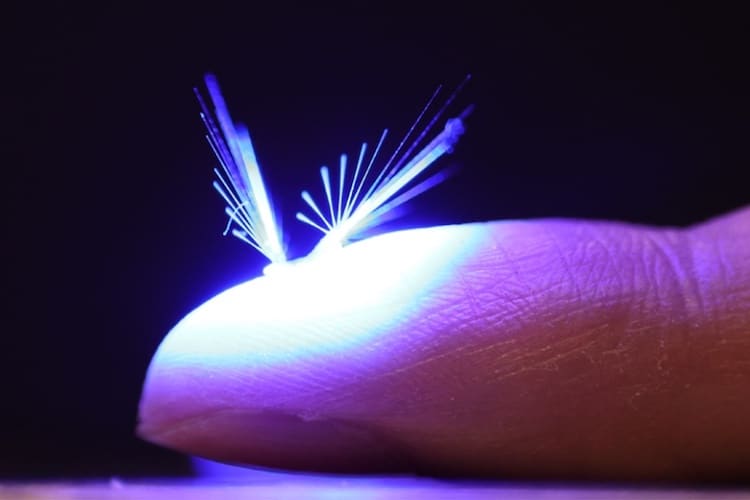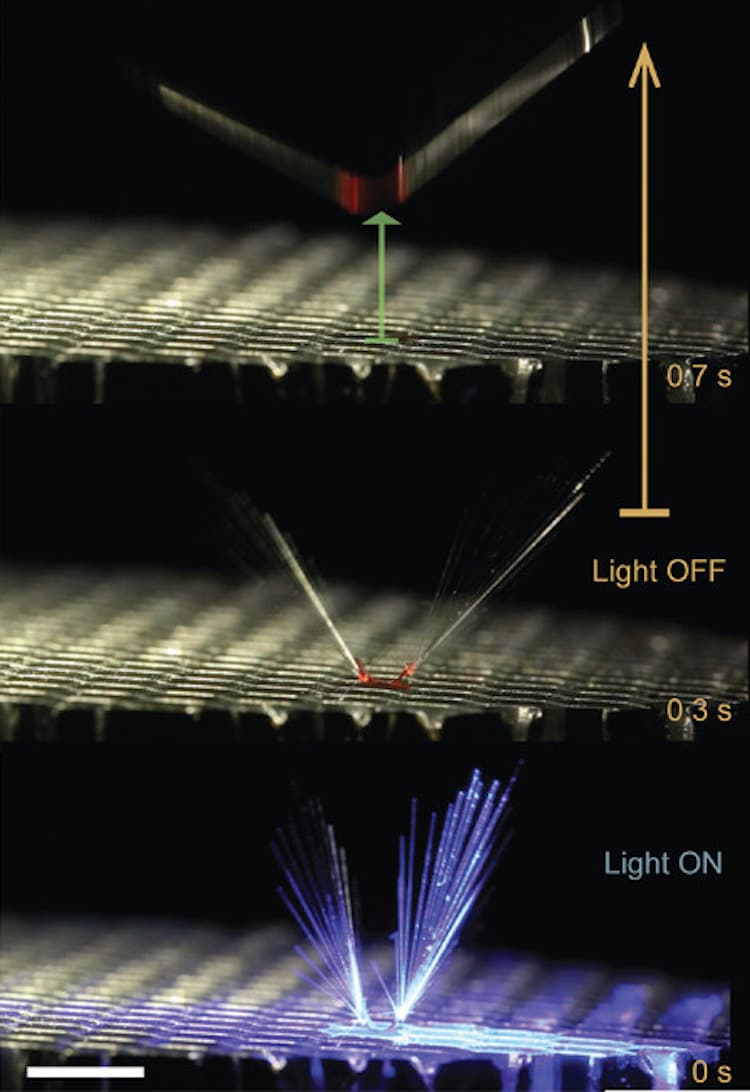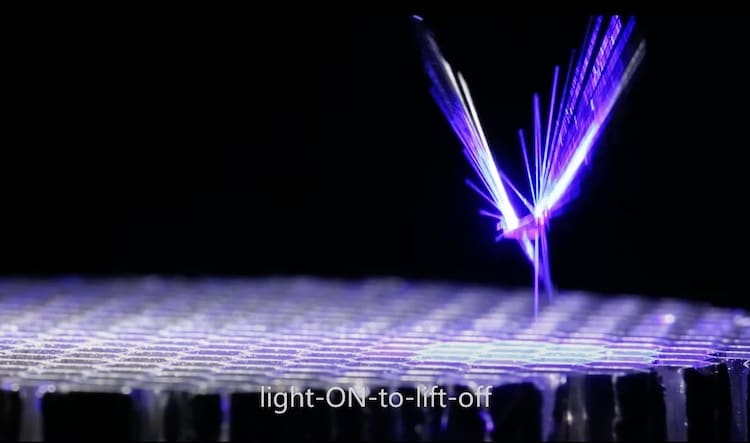Photo: Jianfeng Yang/Tampere University
The declining populations of pollinators across the globe are of great concern.
In Europe, bus stops have becomepollinator pit stops.
In Japan,tiny water shrinesserve as bee respites.

Photo: Jianfeng Yang/Tampere University
But what if pollinator populations are declining too much?
A team of scientists fromTampere Universityin Finland has a possible solution.
The university’sLight Robotsis a group focused on robots that respond to light and are also lightweight.

Photo: Hao Zeng and Jianfeng Yang/Tampere University
It honed in on stimuli-responsive polymers.
This polymer-assembly robot can fly by wind and is controlled by light.
Superior to its natural counterparts, this artificial seed is equipped with a soft actuator, explains Zeng.

Photo: Hao Zeng and Jianfeng Yang/Tampere University
In other words, light can be used to change the shape of the small robot.
Zeng and Yang designed these tiny fairies to mimic one of natures best pollinators, the dandelion.
Dandelion seeds createseparated vortex rings, which help the seeds balance and travel long distances.

Photo: Hao Zeng and Jianfeng Yang/Tampere University
A beam of light can also control how the robot takes off and lands.
The researchers will next set their sights on improving the design and scaling it to have incredible benefits.
Theyll work on the polymers sensitivity so that the micro-robots can be controlled in daylight.
Theyll also find ways to carry tiny electronic devices like GPS and sensors, and chemical compounds.